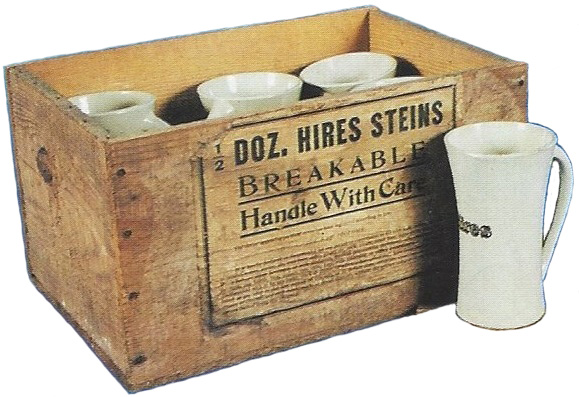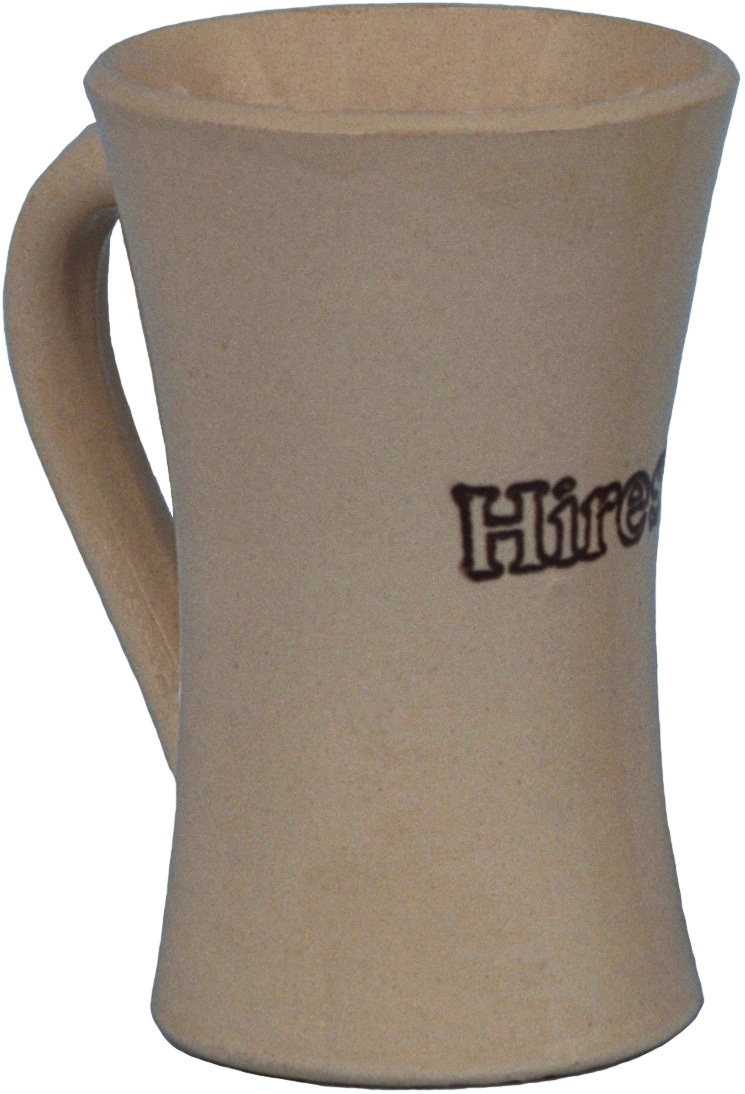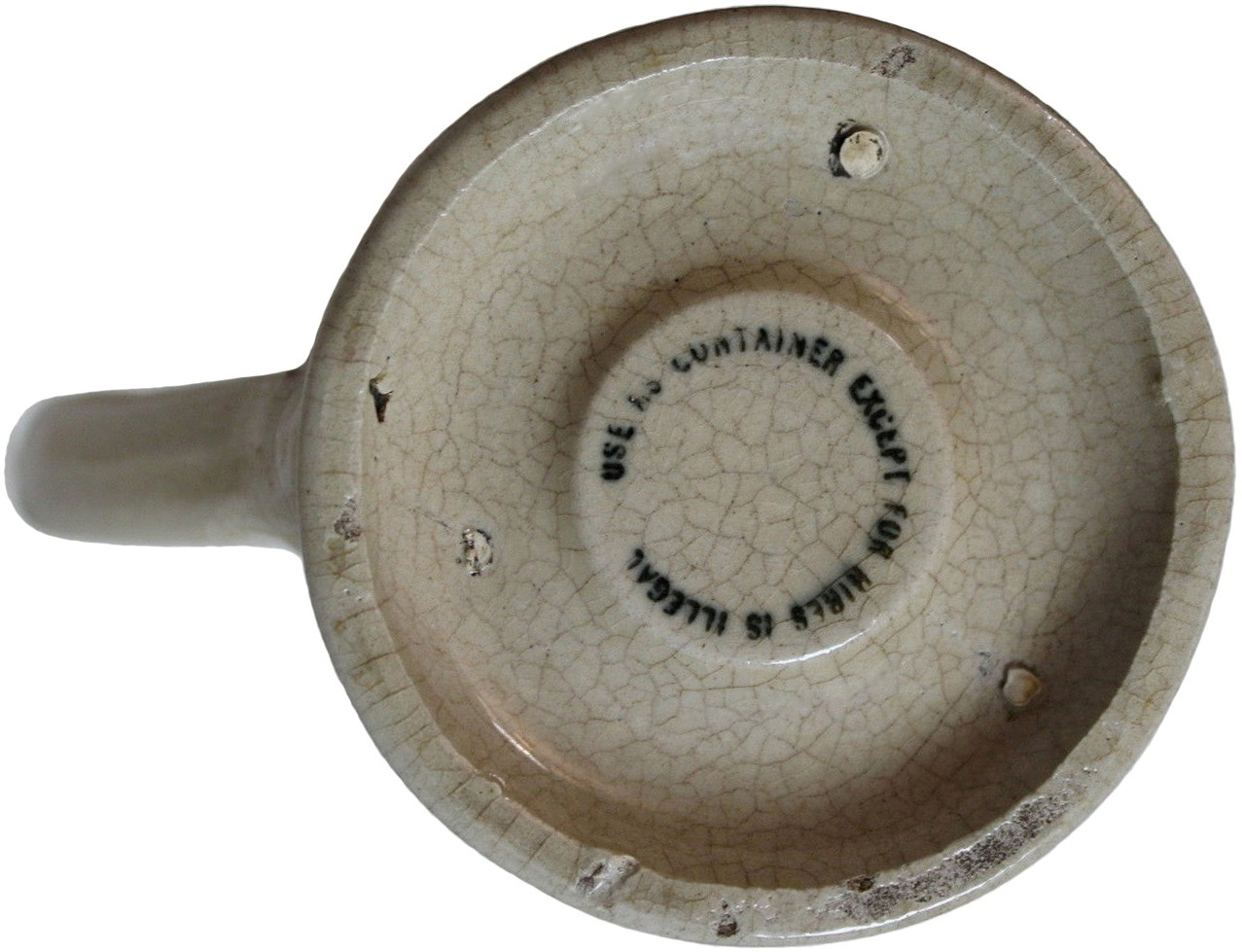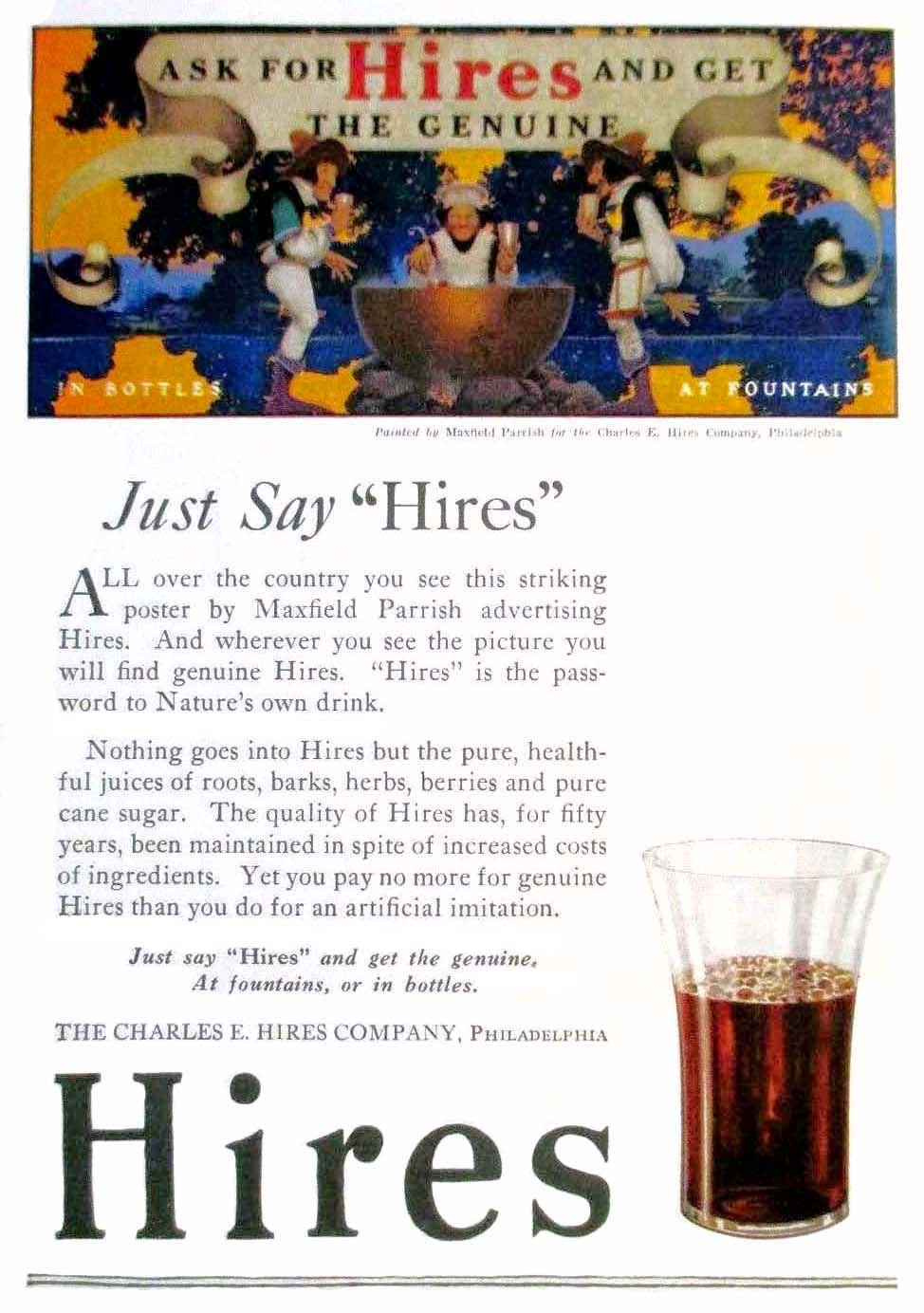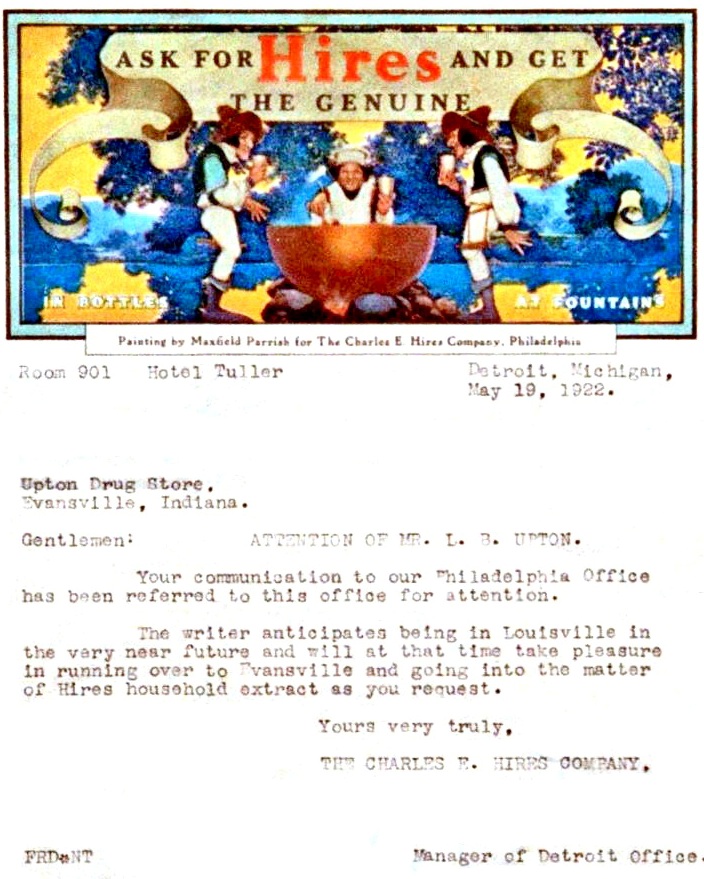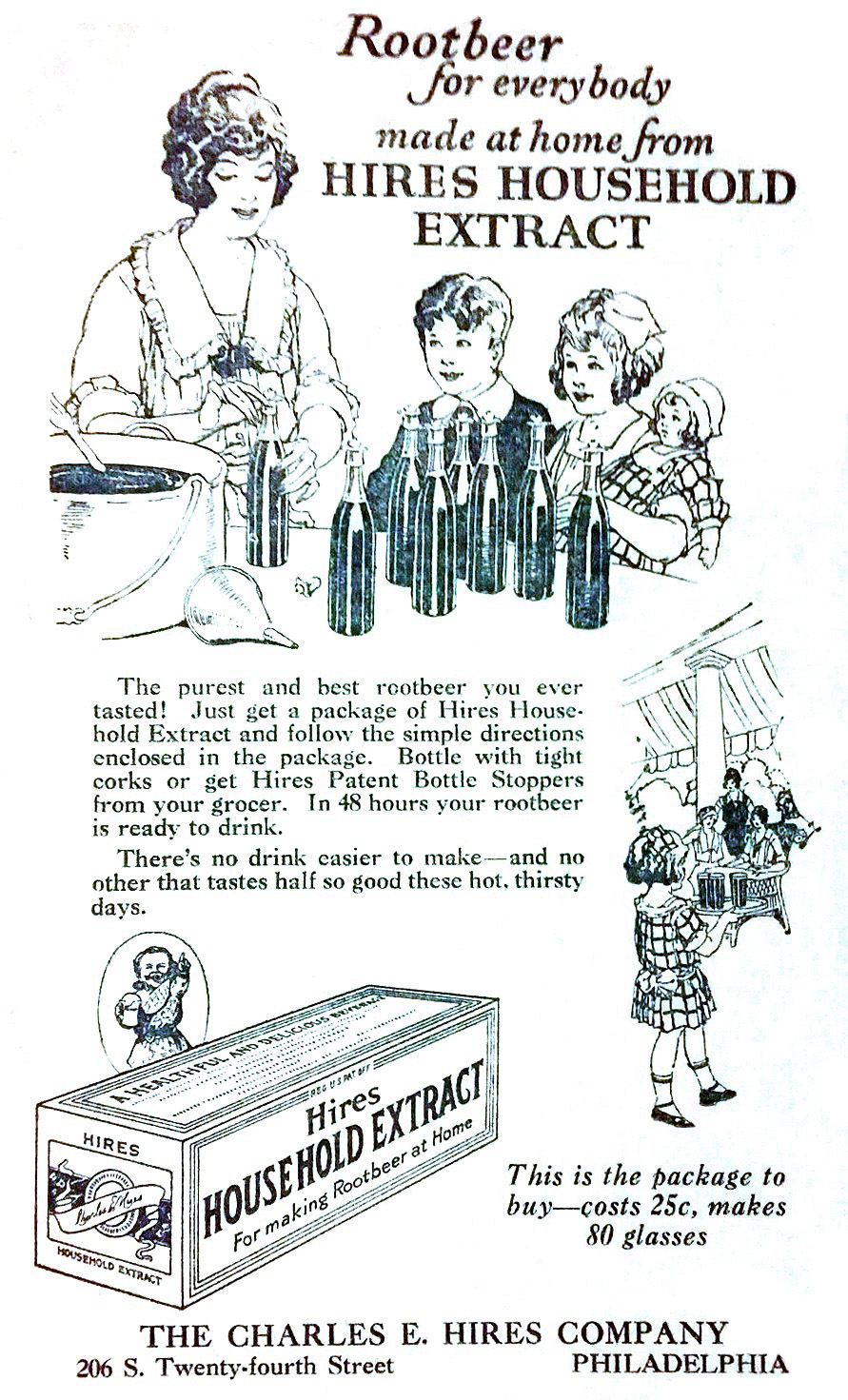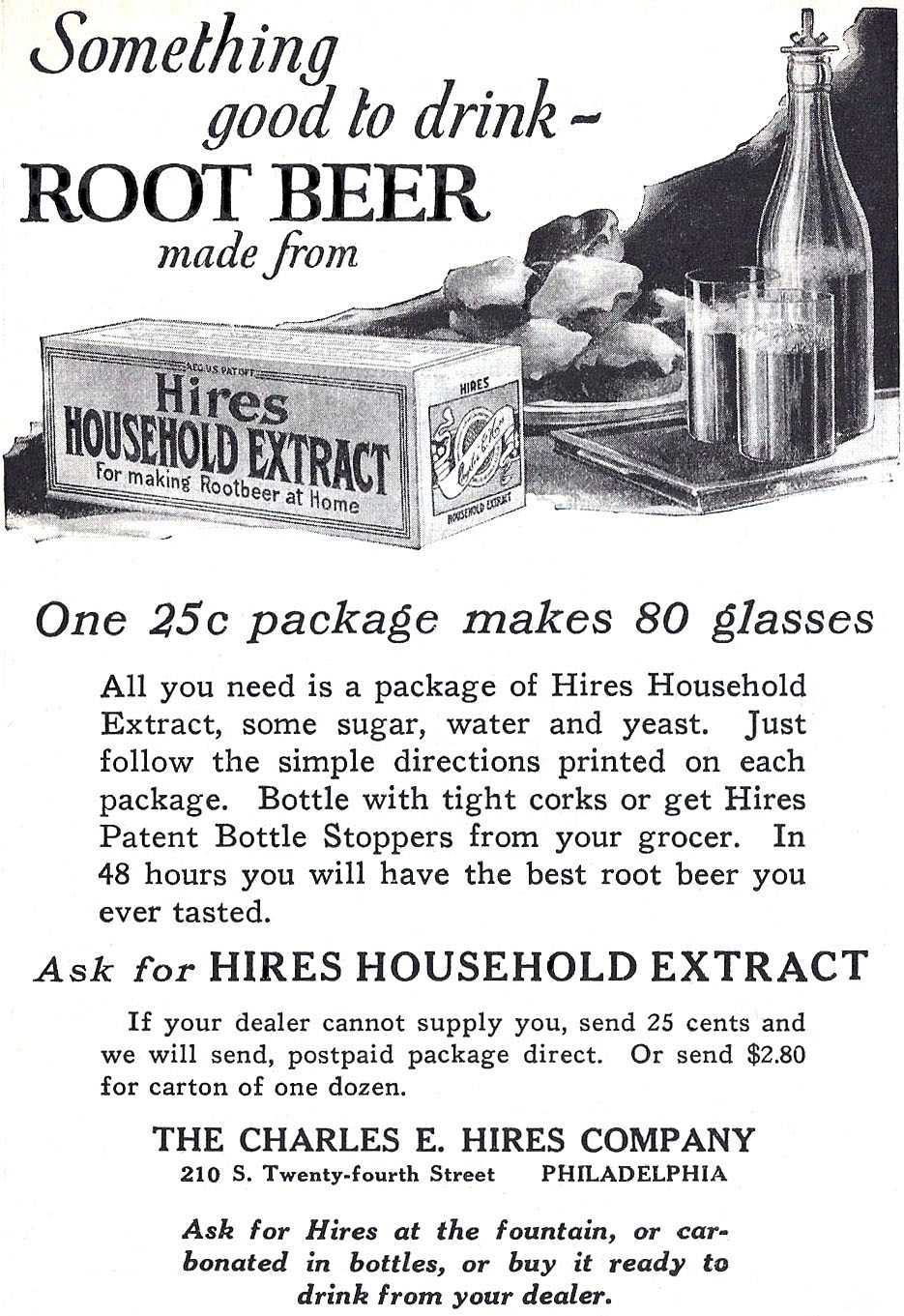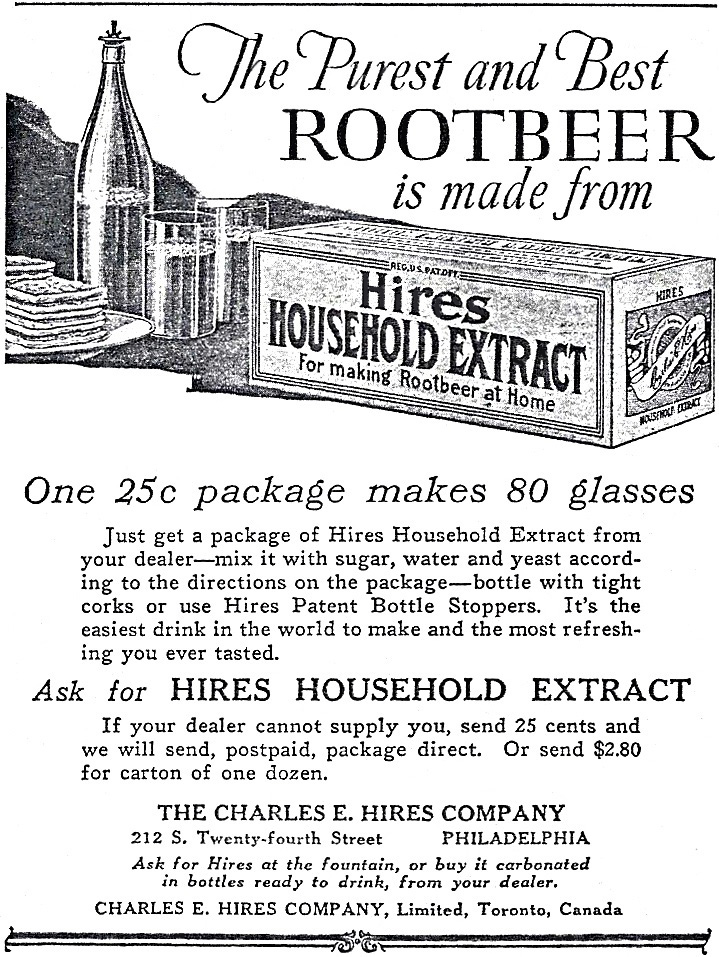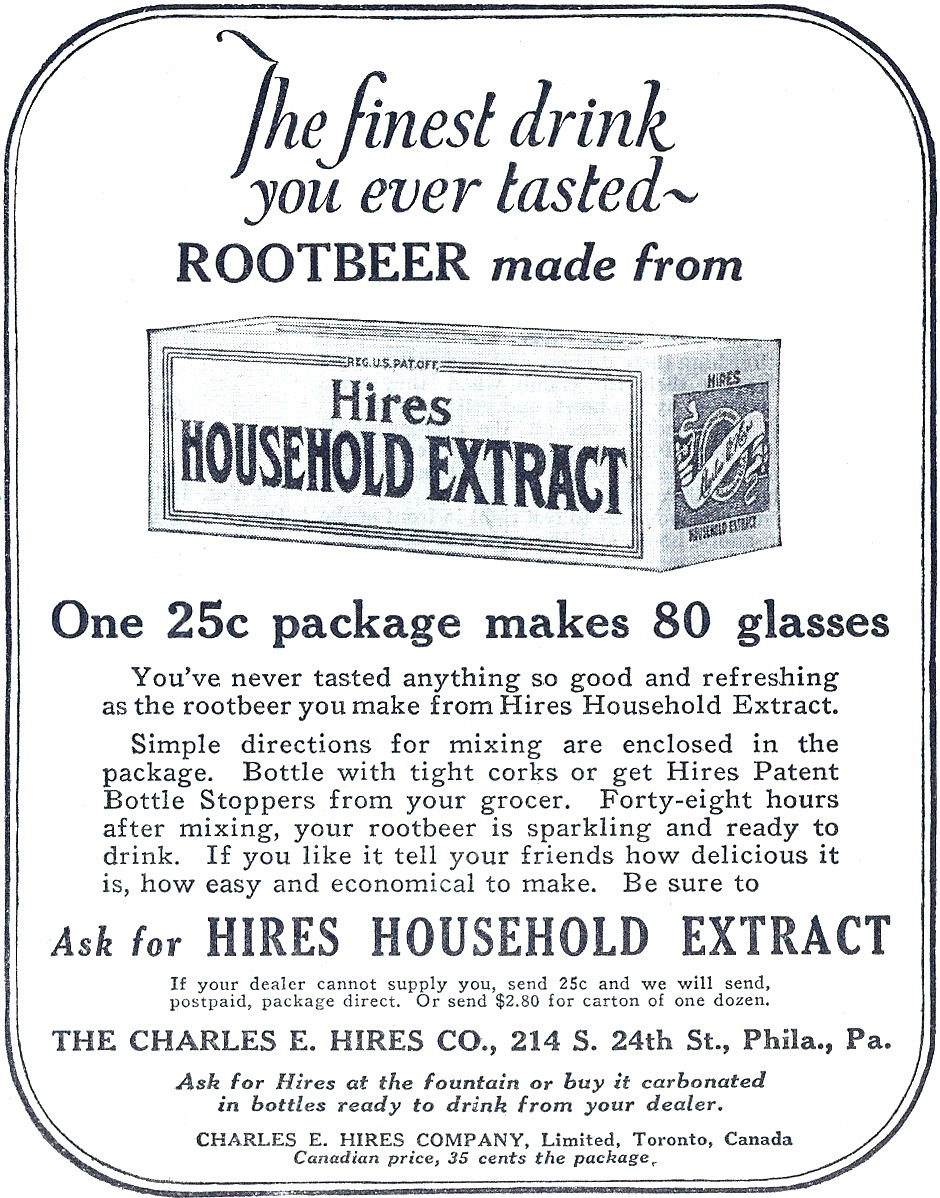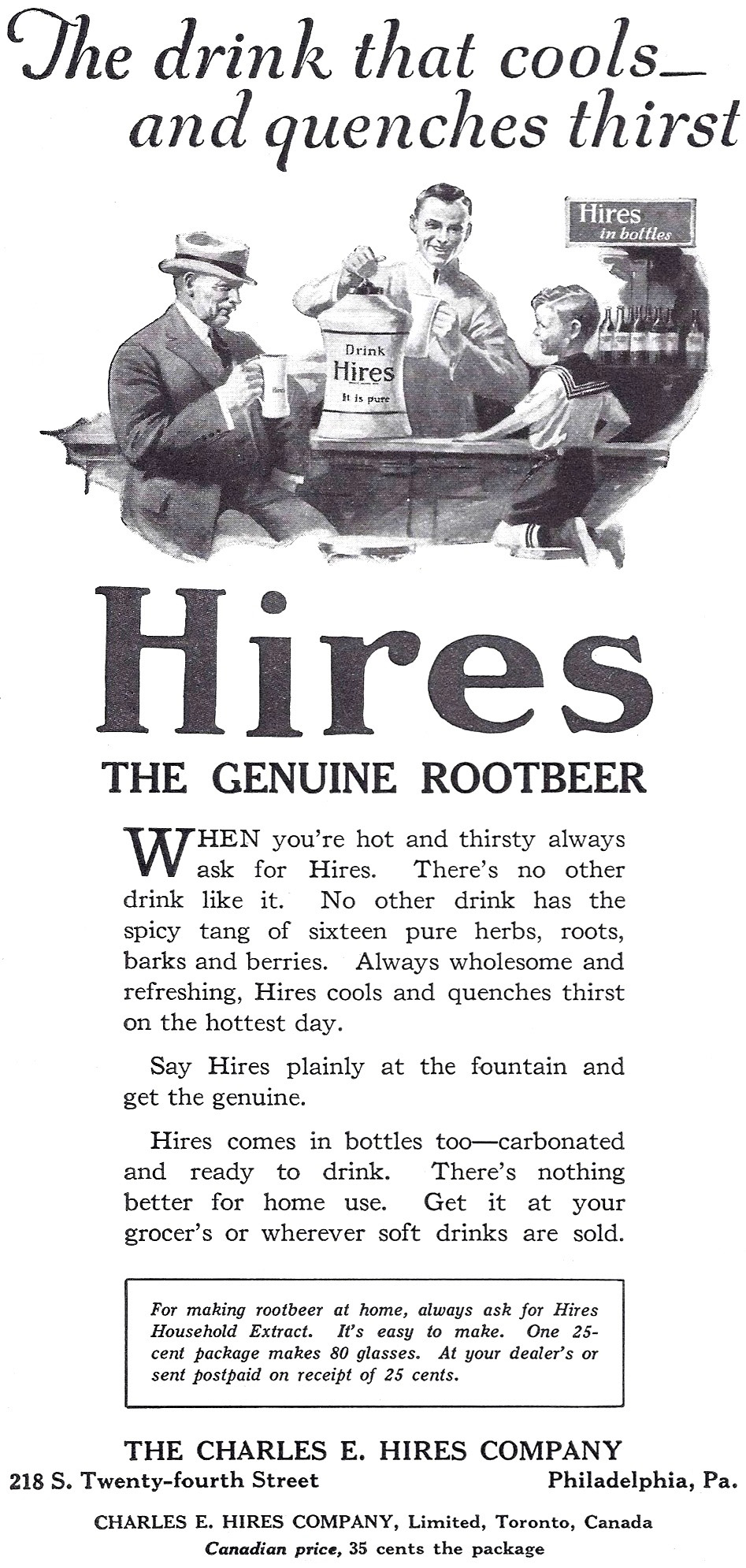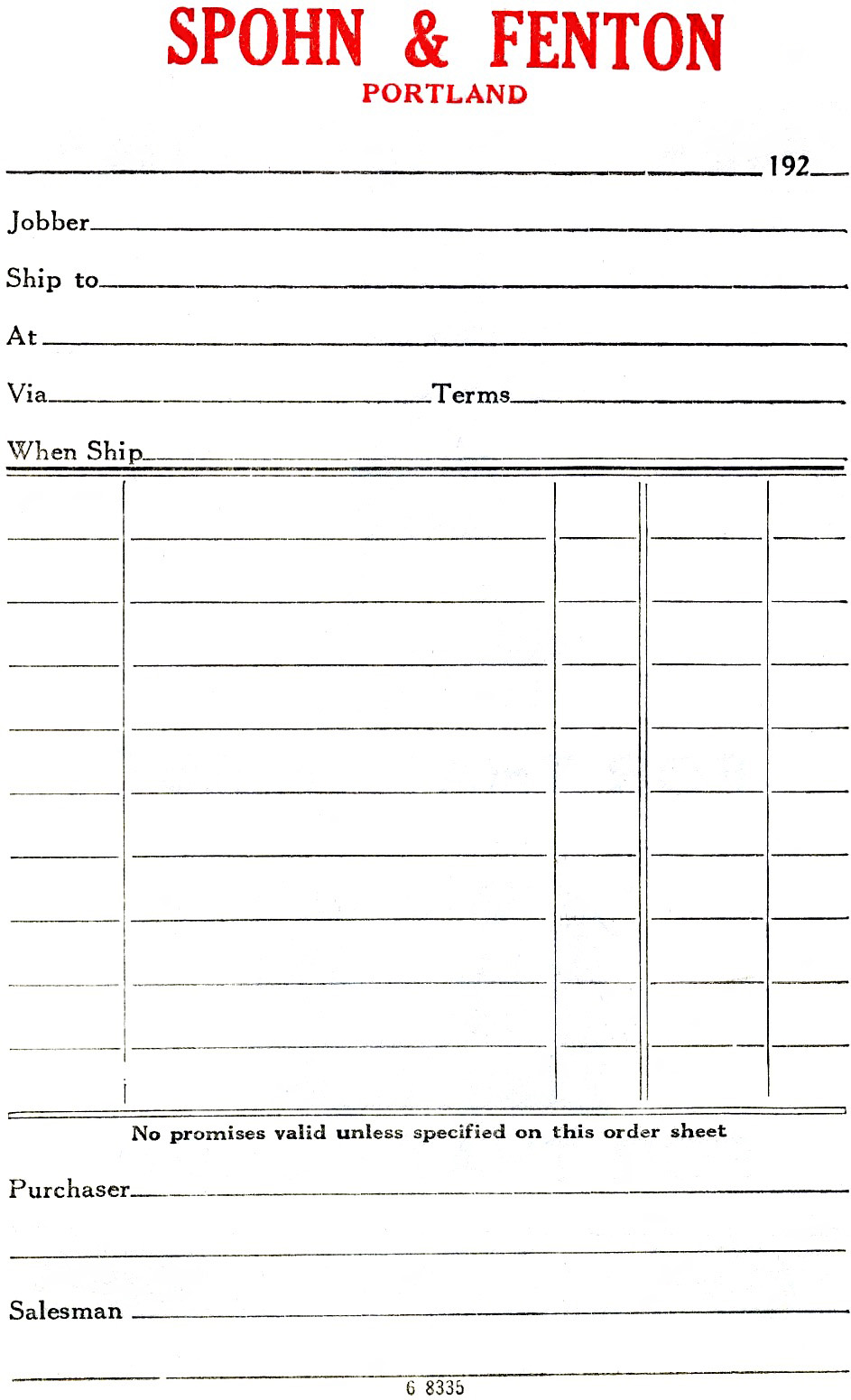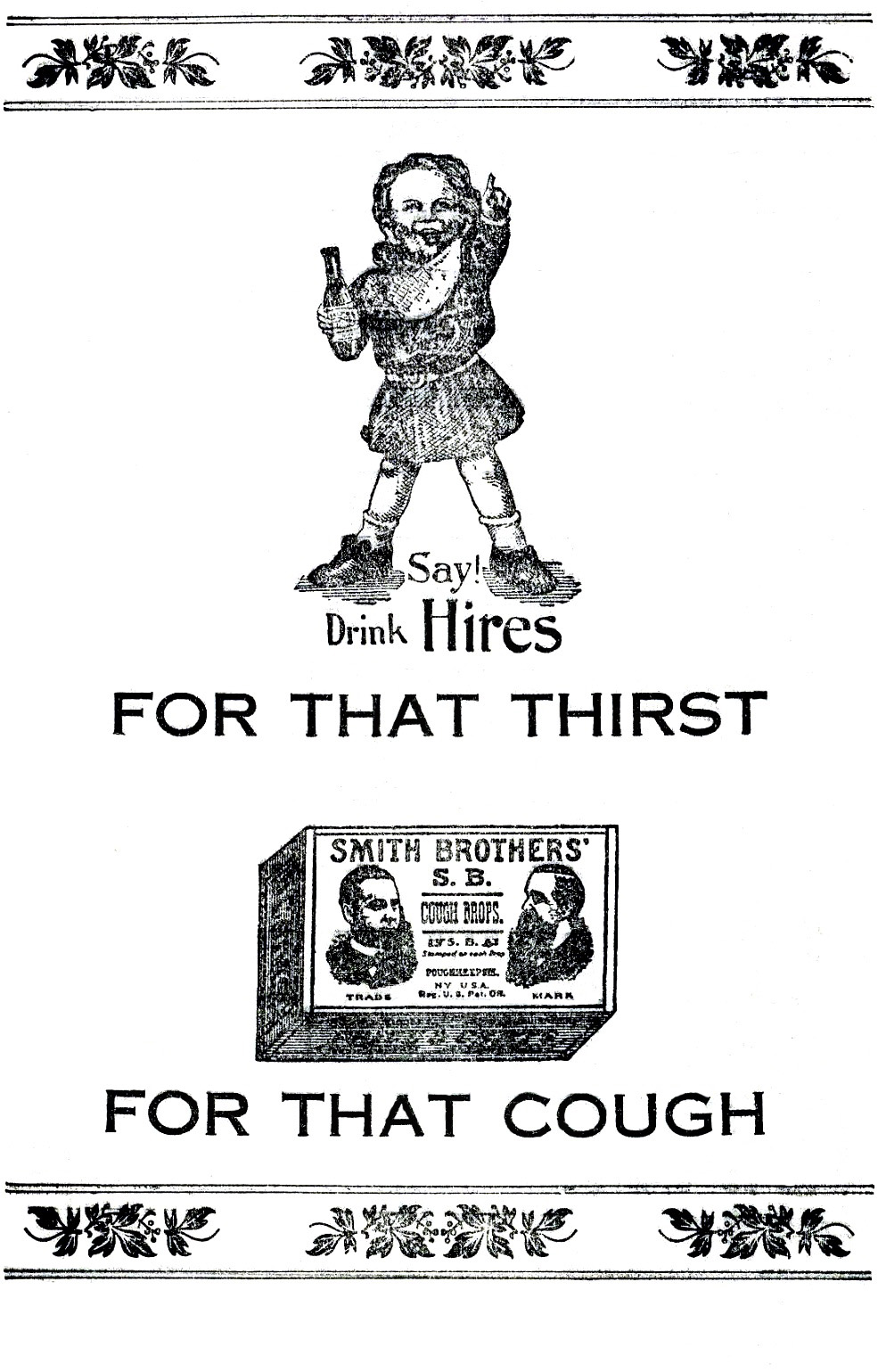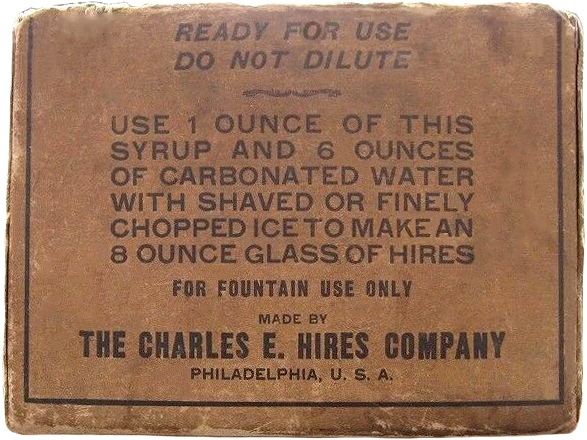1922
IT HAPPENED IN…1922
Government intervention caused strikes by
coalminers and railroad workers to collapse.
The first radio commercial was broadcast in New
York City.
Archaeologists unearthed the treasures of the
Pharoah Tutankhamun in Egypt.
The American Episcopal Church removed “obey” from
marriage vows.
Newly introduced products included the Maytag “Gyrofoam”
washing machine, blenders, and Kellogg’s Pep breakfast food.
Mah-Jongg was a major U.S. craze.
Reader’s Digest
and Better Homes and Gardens
magazines started publication.
Popular soft drinks
included NuIcy, Brandimist, Brandywine, NuGrape, Good Grape, Grapico,
Bluebird, Orange Kist, and Ginger-Mint Julep.
Dry ginger ale was advertised as a “mixer.”
Hires shipped steins to storekeepers in wooden cases packed with straw
to help prevent breakage. The illustrated case is 17.0" long,
11.0" wide, and 10.0" high:
(Figure 1922-01, wooden
shipping case for six Hires steins)
The new style of Hires pottery stein introduced in 1922 was simply marked “Hires,” rather than “Drink Hires It Is Pure.” They are found in two sizes: 7.0” high x 4.5” in diameter, and 6.0” high x 3.875” in diameter. Some have blank bases, while others are marked “USE AS CONTAINER EXCEPT FOR HIRES IS ILLEGAL.” The pictured example is the shorter version with a marked base.
(Figure 1922-02, pottery
stein, 6.0” tall)
(Figure 1922-02, pottery stein
marked base, 3.875” diameter)
In addition to the individual paintings of gnomes, Maxfield Parrish produced a larger painting featuring the two gnomes serving as tasters as a cook brewed root beer in a large cauldron. This image was used for billboards, company letterhead, posters, decals, and magazine advertisements. The illustrated photo of the framed original painting was taken at a downward angle.
(Figure 1922-03, Maxfield Parrish original painting, Hires Family Archives)
This magazine advertisement features the Maxfield
Parrish painting illustrated above.
Note the accompanying copy mentions “Hires has, for fifty years been
maintained…” providing yet another inaccurate reference to the company’s
founding date.
(Figure 1922-04. Maxfield
Parrish magazine
advertisement)
Maxfield Parrish’s drawing of a gnome looking to the left also appeared
in outline form on the end panel of this wooden shipping case for five
gallon tins of Hires Fountain Syrup.
(Figure 1922-05, Hires
Fountain Syrup wooden shipping case end panel)
Stationery utilizing the Maxfield Parrish painting
letterhead was used for this letter sent to a druggist in Evansville,
Indiana from Hires’ Detroit, Michigan office.
(Figure
1922-06, letterhead with Maxfield Parrish painting, May 19, 1922)
(Figure
1922-06.5, newspaper advertisement, 9.75" x 6.125")
Hires placed this advertisement in
Pictorial Review and
Needlecraft magazines.
Pictorial Review was
one of most popular women’s magazines and enjoyed a huge circulation.
The brief attempt at increasing the price of Hires Household
Extract to 30¢ failed, and the price was returned to 25¢.
(Figure
1922-07,
Pictorial Review and
Needlecraft, May 1922)
Here is an excellent example of how Hires continually
changed content, even if only slightly.
Note the similarities and differences between this advertisement
and the previously illustrated example.
(Figure
1922-08,
Needlecraft, June 1922, courtesy of Dennis Smith)
This advertisement listed Hires’ main offices in
Philadelphia and Toronto, Ontario, Canada.
Packages of Hires Household Extract were priced at 25¢ in the
United States, and 35¢ in Canada.
(Figure
1922-09,
Needlecraft, July 1922)
This advertisement ran in
The American Magazine, a
publication that targeted a female audience and had a monthly
circulation of just under 1.8 million copies in 1922.
(Figure
1922-10, The
American Magazine, July 1922)
This advertisement in
The American Magazine repeats
the previous month’s format, but the headline and text were revised and
35¢ price for Hires Household Extract in Canada listed again.
(Figure
1922-11, The
American Magazine, August 1922)
A wholesale house used these pre-printed order forms and not missing an advertising opportunity, they had small advertisements for Hires and Smith Brothers Cough Drops printed on the back side.
(Figure 1922-12, order form,
front and back, courtesy of Mike Godown)
While wooden cases were used for shipping five gallon tins of Hires fountain syrup (see Figure 1922-05), boxes made of Mineralite covered with paper signage were utilized for shipping smaller bottles of fountain syrup. Mineralite was a cement-like product used by Boxboard Products Company in Philadelphia for manufacturing sturdy shipping containers. The bottom panel of the illustrated 10.5" x 10.5" x 7.5" high carton bears several Mineralite patent dates, with the newest being 1922.
(Figure 1922-13, fountain
syrup carton front and back, courtesy of Dan Morley)
(Figure 1922-13, fountain
syrup carton end panels, courtesy of Dan Morley)
Charles E. Hires Company sales for 1922 were listed
as 653,440,468 glasses.

